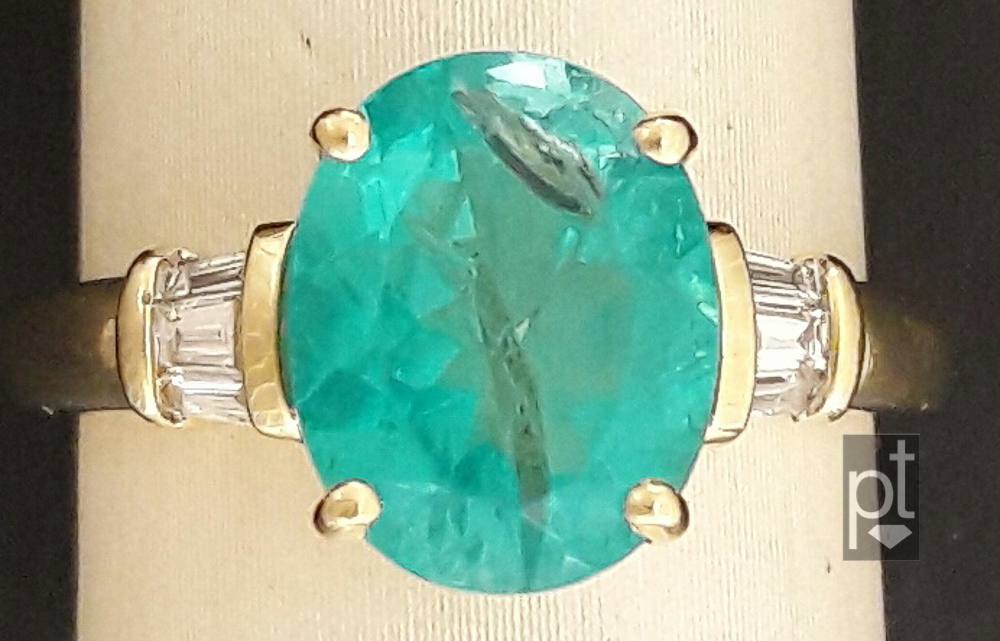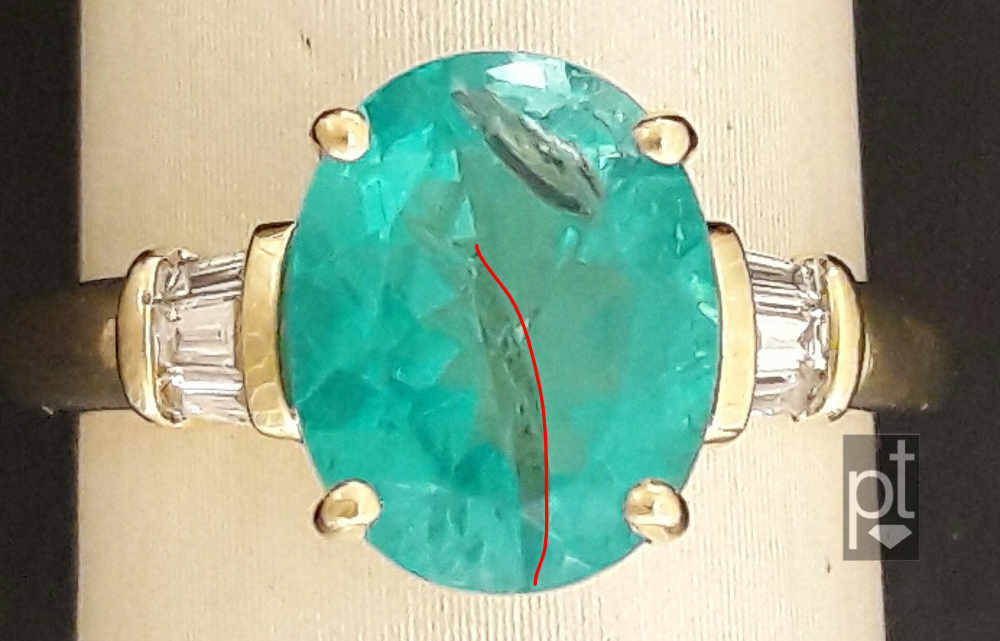Gemstone repair is one of the services I offer to the jewelry trade. All gemstones (diamond included) will take wear over time, especially if they’re used in rings. Happily, the great majority of the stones can be repaired with minimal loss. But occasionally the damage done cannot be removed.
For example: I recently received an image of a fine blue apatite that was mounted in a ring. The jeweler was hoping I could remove the surface scratches from the stone.

The image is not clear enough for me to judge how much abrasion there is on the crown. But it is immediately obvious the stone has significant inclusions. Some inclusions, like the one at the top of the stone, may have existed before the stone was cut into an oval. If that’s the case, it’s probably stable and not a problem to work around.
However, the longer inclusion (highlighted below) is a significant problem: notice how the feather crosses over half of the stone. The jeweler confirmed for me that inclusion also touches both the crown and pavilion. That means that over half of the length of this apatite is not in contact with the other half. I strongly suspect any amount of additional stress on this stone will cause that feather to expand, possibly splitting the stone.

Unfortunately, damage like this cannot be repaired. The ring’s owner is left with the choice of replacing the stone or simply living with it until the stone breaks.
When evaluating gems for repair, be sure to look at more than the surface reflections. Examine all sides of the stone and consider if the visible damage is limited to the surface or goes deeper in. If you’re working behind the counter, be sure to examine the stone with your client and document whatever you see in writing. Hopefully this avoids misunderstandings in the future.
If you have any doubt about what you’re seeing or are ready to have a stone repaired, I’m happy to help. Just send me an email (with an image, if possible) and we can discuss what I can do for you.
